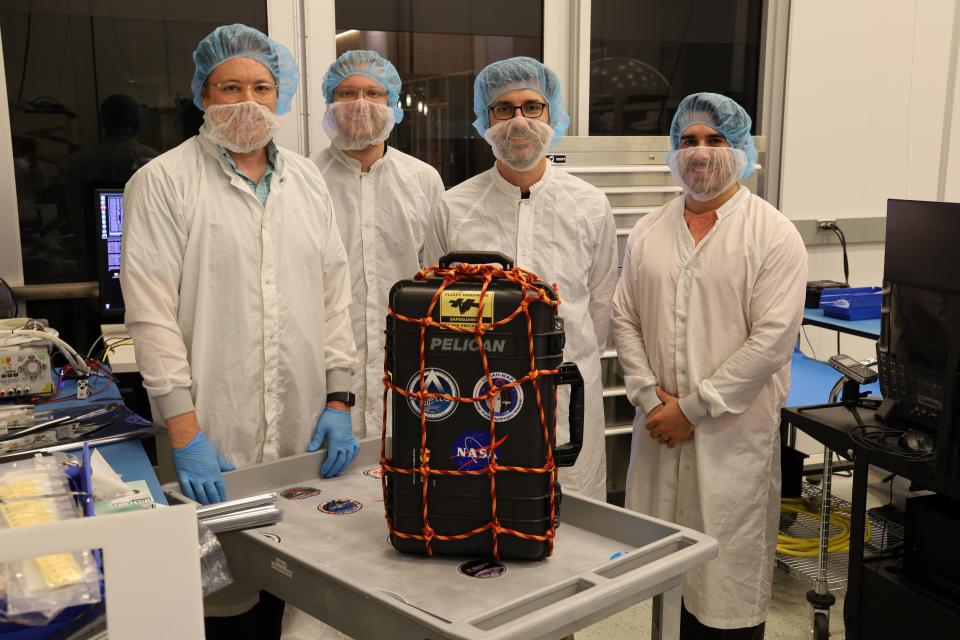Sign In / Sign Out
Navigation for Entire University
LunaH-Map is a new type of NASA planetary science mission. LunaH-Map is a miniaturized, fully functional interplanetary spacecraft the size of a shoebox that will map hydrogen enrichments (indicators of water-ice) within permanently shadowed regions of the lunar South Pole. By flying over the South Pole at a very low altitude, LunaH-Map will be able to resolve ice enrichments that previous spacecraft missions could not. The spacecraft will use a miniaturized propulsion system, attitude control, power and communications systems to maneuver into orbit around the Moon.
LunaH-Map passed all verifications and checkouts at ASU and was delivered (hand carried on a commercial air flight) to NASA Kennedy Space Center on July 14th 2021. The spacecraft was inspected and inserted into the dispenser for integration onto the Space Launch System (SLS) Orion Stage Adapter (OSA). LunaH-Map, along with the other secondary payloads on SLS Artemis-1 will deploy from the dispenser several hours after the launch of SLS in late 2021 or early 2022. LunaH-Map will be operated at ASU and will navigate into lunar orbit over the course of several months before descending into a low-altitude science orbit over the lunar south pole.

LunaH-Map spacecraft packed and ready for delivery to NASA KSC. LunaH-Map team members from left to right: Joe DuBois (Mechanical Lead), Nathaniel Struebel (Mechanical and Thermal Engineer), Craig Hardgrove (Principal Investigator), Tyler O'Brien (Operations)